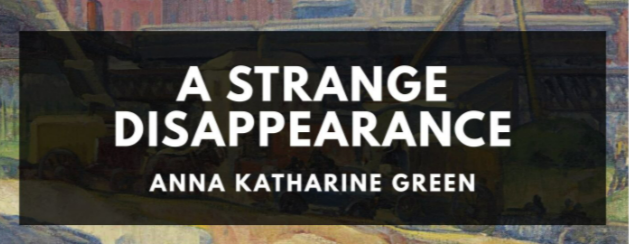CHAPTER VII — A Strange Disappearance
byCHAPTER VII – A Strange Disappearance unfolds as the narrator trails Mr. Blake to the seemingly quiet town of Putney, unaware that this detour will lead into the shadowy remains of a criminal past. Initially drawn by vague curiosity and Mr. Blake’s oddly evasive behavior, the narrator finds himself outside a house isolated near Granby Cross Roads. Its worn exterior and closed shutters give off a sense of abandonment, yet something about it feels disturbed—recently used but intentionally left in disrepair. The air carries the weight of stories long buried. Known to have housed the Schoenmakers, infamous for a bank robbery and subsequent prison escape, the location is more than a ruin—it is a silent witness to betrayal and fear. Although the neighborhood appears still, the silence is heavy, suggesting that the house may not be entirely deserted after all.
Pushing past hesitation, the narrator steps inside and observes signs that contradict the house’s deserted appearance. In the main room, footsteps disturb the dust, and in the kitchen, a pile of ashes draws his eye. From within, he uncovers charred fabric scraps and a woman’s ring, half melted yet distinct. These remnants do not belong to time; they belong to someone recently trying to erase their presence. The unsettling feeling of being watched begins to press in on him. Every sound in the wind or creak in the floor seems amplified. Though he is alone, the tension makes solitude feel like a lie. The sense that the house still holds secrets compels him to search further, but instinct holds him back from descending into the unlit cellar. His refusal is not cowardice, but a calculated act of self-preservation. Sometimes, turning back can be the braver choice.
With a mind still racing from what he’s seen, the narrator leaves the house and returns to town, carrying more than a story—he carries a thread. What began as a spontaneous visit to satisfy curiosity now stands as a critical clue in a far larger mystery. He understands that the items found, especially the ring, could serve as key evidence. If the Schoenmakers have indeed returned and used the house as a temporary hideout, then law enforcement could finally have a chance to track them. The idea of contributing to their capture not only heightens his sense of urgency but awakens the thought of a significant reward. The risk he took walking into that place now feels justified by purpose.
Back in familiar surroundings, he debates whether his findings will be taken seriously. His resolve settles. He must act. He plans to report what he discovered to the proper authorities and provide detailed descriptions of the clues gathered. Although he left the cellar untouched, everything else aligns with the notion that the criminals remain closer than expected. The ring, in particular, could be tied to a missing person or perhaps stolen goods. Either possibility means the house’s role in the crime is not just supportive—it could be central. The sooner it is investigated professionally, the better.
This chapter intertwines atmospheric tension with the narrator’s evolving courage and sense of moral obligation. The use of isolation and ruined beauty—an abandoned house hiding dark truths—adds to the suspense. As readers, we are placed inside the narrator’s mind, hearing his internal questions while sensing the same dread that stalks him from room to room. The decision not to enter the cellar might feel unfinished, but it builds anticipation and reminds us that fear, when acknowledged, sharpens rather than dulls bravery. This narrative beat also mirrors real investigative work, where risks must be weighed, and emotional awareness often guides the best outcomes.
By positioning this domestic ruin as more than a backdrop, the chapter adds depth to the larger mystery. The Schoenmakers, once distant names in a case file, now feel tangible—possibly just a room or two away. With the narrator ready to take action, the story shifts gears. The line between witness and participant has now been crossed. And the path toward unraveling the strange disappearance grows darker, richer, and increasingly real.

